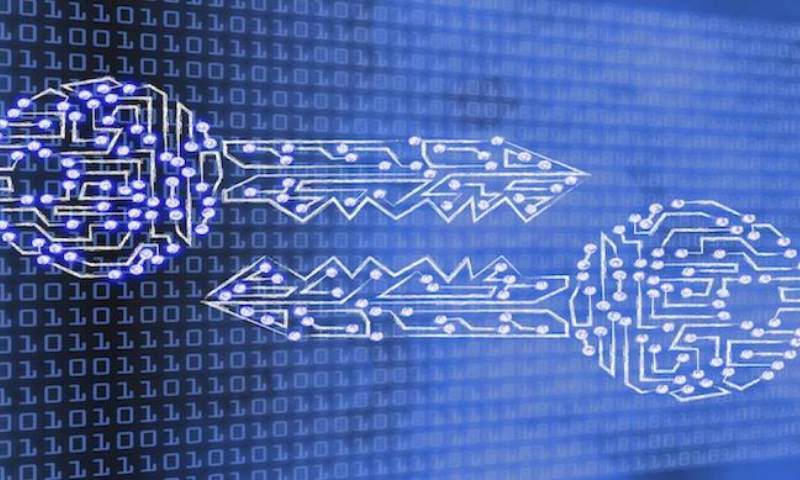In the digital realm, the security of hash functions is your silent guardian. Imagine your data as a fortress, and these functions are the unyielding walls protecting it from invaders. I live and breathe this security, and I’m here to guide you through its labyrinth. We’ll walk through the integrity checks that keep your information whole, dive into the best ways to shield against sneaky vulnerabilities, and gear up with the toughest mechanisms that make trust in the digital world possible. Stick with me, and I’ll show you how to use advanced tactics and smart practices to keep your data safe now and ready to face the challenges of tomorrow’s tech.
Understanding Cryptographic Hash Function Security
Evaluating Hash Function Integrity
When we talk about keeping digital data safe, think of hash function integrity as the lock on our data’s front door. A strong lock keeps our information secure from thieves. In the world of data, we need cryptographic hash protection so our secrets stay hidden. This means checking if our digital lock doesn’t rust or break.
Hash function applications in security are vast, from banking to sending emails. They take data and mix it up into a fixed-size “hash value”. A good hash function makes it hard to find what went into making that hash. We call this preimage resistance. In simple words, it’s like making a smoothie so well-blended, you can’t tell what fruit went in.
Now, think about writing down a secret and giving it a special number that only that sentence can have. Hashing does this for data. This number checks data integrity verification—making sure no one has messed with your secret. We need this for things like making sure no one changes our online messages.
Digital signature hash function role is also big. It’s like sealing a letter with wax. That wax seal is the hash, proving the message wasn’t opened or changed. It’s important in SSL/TLS, where secure hashing sends info safely over the internet.
Hash algorithm vulnerabilities, though, can turn our digital locks into weak ones that can be picked. Collisions are when two different data pieces have the same hash. It’s like two houses having the same key – not safe! Secure hash algorithm 2 (SHA-2) security avoids this by using complex math to create unique hashes.
Identifying and Protecting Against Hash Algorithm Vulnerabilities
Now, let’s talk scary stuff. Hackers use brute-force attacks against hashes to guess what data made that hash. Or rainbow tables and hashing – big cheat sheets of possible hashes. But we’ve got shields for these. First, adding a “salt” in hashing letters to our data before mixing up a hash. It’s a unique bit, like a secret spice, that makes our data’s hash different from anyone else’s.
Another shield is HMAC or Hash-based Message Authentication Code. HMACs add another layer of secret codes to our hash values. It’s like having an alarm system with both a lock and a password.
Blockchain and hash security fit together like puzzles. Each piece of the chain has its own hash, linked to the last. Change one piece, and the whole chain shows this. Think, Merkle tree and hashing – it’s a big tree of data pieces where each branch has a hash tied to the leaves. If a leaf changes, the branch shows a new hash.
To sum it up, we have to keep testing our digital locks – the hash functions. Hash function security in cloud storage, in our online shopping, and in keeping private chats private is crucial. We do this by validating hash functions, looking for any weak spots. Keccak hash function, for example, is the new kid on the block, tougher against attacks. We want to make sure it can fight off tomorrow’s digital lock picks, too.
Ensuring Robust Hash Mechanisms for Digital Trust
Implementing Cryptographic Nonces and Salts
How do nonces and salts bolster hash function security? Nonces and salts prevent patterns that hackers exploit. These unique bits of data make simple passwords complex when hashed. They defend against brute-force and rainbow table attacks, common hacking tricks that crack passwords. Nonces, or numbers used only once, mix in random numbers for every transaction. Salts also mix in random data but get stored with the hash. Both make every hash output unique, even with the same input, to block pattern tracking.
By using nonces, a system ensures that reusing a password doesn’t result in the same hash twice. This helps stop replay attacks where old messages may be reused to gain unauthorized access. When you join a new website, they often use salts in your password hash. This method makes sure that even if your password is simple, like “1234,” once the salt is added, it becomes a complex and unique string of characters.
The Role of HMAC in Enhancing Security
What does HMAC do for security? It checks data integrity and confirms data is from a known sender. HMAC is short for Hash-based Message Authentication Code. It combines a secret key with the hash function. This provides a seal or signature that only a sender with the right key can make. It’s like a secret handshake between your computer and the sites you trust. This makes the hash output not just unique, but also securely tied to the key holder.
Using HMAC is vital for keeping information safe when sent across the internet, especially in banking or emails. Banks use it to ensure that the message you send about your account details stays tamper-free. It’s also used in making sure the wireless network you connect to is the one it says it is, not a fake one set by hackers.
This special combo helps prevent certain attacks, like man-in-the-middle, where someone might try to intercept or change the messages you send. Think of HMAC as an extra protective layer that makes sure the message stays original from start to end.
By understanding and applying cryptographic nonces, salts, and HMAC, we create digital environments that users can trust. It’s like adding a complex, unbreakable lock to your digital house. With these in place, we step up the fight against the ever-evolving threats in the digital world, keeping our personal and business data secure. Behind every secure login, message, or transaction stands a cryptographic hash function reinforced by these methods. It’s our silent guardian ensuring that our digital interactions stay safe and sound.
Advanced Hash Function Applications and Best Practices
The Significance of Hash Functions in Blockchain and Digital Signatures
Do you know what keeps blockchains and digital signatures safe? It’s hash functions! They make sure no one messes with data. They’re like digital fingerprint makers. Each one is unique. If the data changes, so does its fingerprint. This way, we can tell if someone tries to change things they shouldn’t.
For blockchain, every block has its own hash. Plus, it keeps the hash of the block before it. If a hash changes, you can spot the change right away because it breaks the chain.
Digital signatures use hash functions, too. They take data and give it a hash. Then, a secret key is used to “sign” it. To check the signature, you need the correct public key. If the hash matches when you check it, you know the signature is good.
Password Hashing Best Practices and Data Integrity Verification
Now, let’s chat about keeping your passwords safe. The best way is to hash them. This means turning your secret password into a hash before saving it. Hackers can’t reverse a hash back to your password. Not easily, anyway. And adding a salt – that’s a random extra bit of data – makes it even harder to crack.
When you log in, the system hashes your password again. Then it compares the hashes. If they match, you’re in. If not, access is denied. Make sense?
For keeping data correct and unchanged, hash functions help here, too. To check data, a system hashes it first, then checks the result with a stored hash. If they match, your data is good. If they don’t, something’s wrong.
So, why is this so important? Because we trust systems with a lot of private stuff. Stuff like our personal information. For businesses, they want to make sure no one tampers with their records. It’s key for trust and safety on the internet.
Hash functions help us sleep better at night, knowing that our digital world is a bit more secure!
Rising to the Challenges: The Future of Hash Function Security
Quantum Computing and the Evolution of Cryptographic Hashing
Imagine a new super strong bike lock. It’s your hash function. It keeps your bike, or data, safe. Now, think about a lock picker that’s way faster than any before. That’s quantum computing. It’s a huge leap from our normal computers. And it’s coming! That means we need to make our locks, or hash functions, even better!
Now, folks ask, why worry about quantum computing? Well, it can solve hard math problems super quick. This can break codes faster than we ever thought. The big question is: Can our current hash functions, like SHA-2, stand up to this? Some say yes, but we’ve got to check and keep checking!
Let’s look at secure hash algorithm 2 (SHA-2). It’s what we use now. It’s strong, like a thick steal lock. SHA-2’s safety comes from being able to withstand attacks. We call this collision resistance. That means no two sets of data should give the same hash. It sounds easy, but it’s super tricky.
Here’s another word: preimage. Think of it as a secret combo to your bike lock. Preimage resistance means even if someone knows your hash, they can’t guess the combo. Second preimage is like having a spare key. It’s making sure no one else can make a key that fits your lock!
Let’s get this straight, SHA-1 and MD5 are like old bike locks. Handy, but they’re easier to crack open. Now, SHA-256? It’s tough, newer, and not broken yet. It’s like that thick steel lock we talked about. SHA-256 is part of SHA-2. It’s even better at keeping secrets than SHA-1 and MD5.
Strengthening Hashing for IoT and Overcoming Cryptographic Challenges
Alright, let’s think about your home. It’s full of smart stuff that talks to the internet. That’s the Internet of Things (IoT). Here’s the deal: each smart thing needs a unique hash to stay safe. But IoT means billions of these devices! How do we keep all those hashes secure?
First, we need to understand ‘nonce’ and ‘salt’. Fancy words, huh? A nonce is a random number we use only once. You can see it in action with Bitcoin mining. Each time they guess the hash, they change the nonce. It’s like constantly changing your bike lock combo as a thief tries to crack it. Salts, they’re random bits we add when we make a hash. It’s like adding extra numbers to your lock combo. Makes guessing much harder!
Now, HMAC – this is a special form of hash made to check that the data sent in a message hasn’t been messed with. It’s a secret code between you and the person you’re talking to.
Guess what: all these cool tricks help with cloud storage too. They help us know our files have not been changed by someone sneaky.
For the security pros, we’re talking about entropy, key derivation functions, and stuff like Keccak. Keccak’s the new kid on the block, tipped to replace SHA-2. It’s like a lock with a combo that never ends! Key derivation functions, they’re like a machine that makes new lock combos from your old one.
So, we keep making our hash functions tough. We test them. We make them better, so they can face stuff like quantum computing head-on. Our mission – keep our data safe, now and ever after!
We’ve explored a lot about hash functions and how they keep our digital world safe. First, we dug into how these security tools work and what keeps them strong. We looked out for weak spots in hash algorithms and learned how to shield against them. Next, we talked about beefing up our hash game with nonces, salts, and HMAC to block hackers.
We saw hash functions’ big role in blockchain and keeping our passwords safe. These tools check that the data we send or store is the real deal, without changes. Lastly, we imagined the future, with quantum computers changing the hash security landscape. We also shared tips on getting our hash game ready for the Internet of Things.
In short, hash functions are critical for our digital trust and security. We must stay sharp and adapt as new tech brings both challenges and solutions. Keep learning, stay updated, and make sure you’re using the best practices to protect your data now and in the future. Let’s keep our digital world secure together!
Q&A :
How do hash functions enhance data security?
Hash functions are fundamental to ensuring data security in various applications. They work by converting input data of any size into a fixed-size string of characters, which acts as the data’s fingerprint. Since hash functions produce a unique output for each unique input and are designed to be one-way and collision-resistant, they make it difficult to reverse-engineer or predict the input, thereby enhancing security against tampering and unauthorized access.
What makes a hash function secure?
A secure hash function has several important properties. Firstly, it should be deterministic, meaning the same input will always result in the same hashed output. It must also be quick to compute the hash value for any given data. Additionally, it should be infeasible to generate the original input from the output hash (pre-image resistance), to produce a different input that gives the same output (collision resistance), or to find two different inputs producing the same output (second pre-image resistance).
Can hash functions be reversed?
By design, hash functions are meant to be one-way functions, which means that they cannot be reversed. The process of hashing takes input data and generates a string of characters that does not retain the original data’s structure in any discernible way. As such, it is computationally infeasible to reverse a hash function and obtain the original input from the hash alone, which is a critical feature for maintaining data integrity and security.
Why is collision resistance important in hash functions?
Collision resistance is crucial in hash functions because it ensures that two different inputs cannot produce the same output hash. If a hash function is not collision-resistant, it would be possible for someone to substitute a valid data input with a malicious one without detection, as both would result in the same hashed value. This property is vital for applications like digital signatures and password storage, where data integrity and security are paramount.
How do hash function collisions compromise security?
Hash function collisions compromise security by allowing an attacker to produce a different input that results in the same hash output as the originally intended data. This could potentially allow attackers to forge digital signatures, tamper with documents, or bypass systems relying on hash values for authentication. Ensuring that a hash function has a low probability of collisions is critical in maintaining the robustness and reliability of cryptographic systems.


